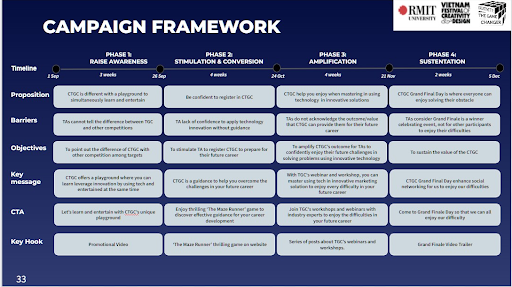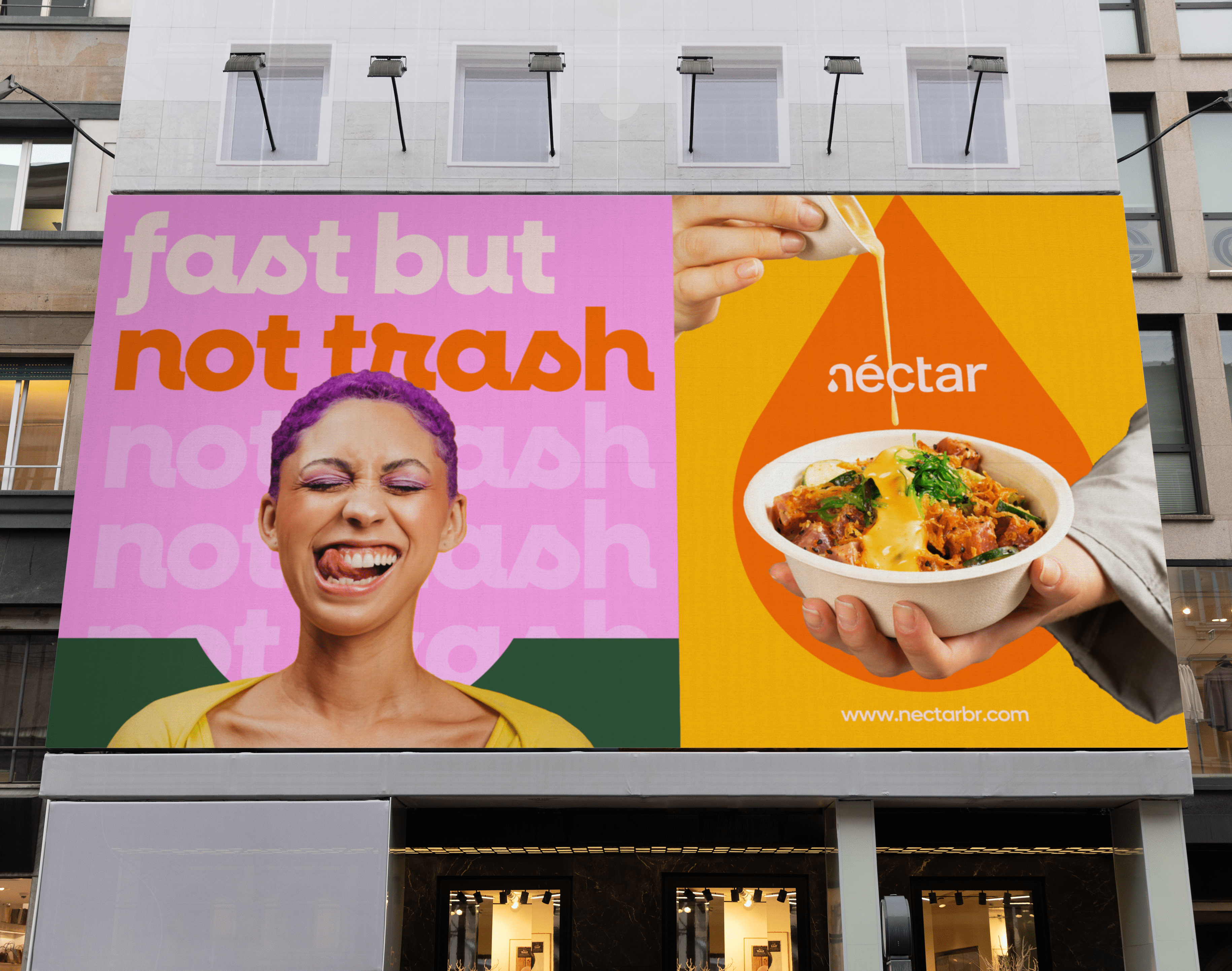A little deep reflection to be more than a teammate,
a collaborator.
My learning process will be reflected in terms of two concepts:
Team formation/ Tuckerman’s group development
Storytelling in my work/ personal branding.
Project
Creativity: The Game Changer 2022
Client
Event Department of School of Communication and Design, RMIT Vietnam
My main role
Creative Copywriter
Team formation/ Tuckman’s group development
After receiving the brief from our clients, our team first listed some challenges we might face, made some general group rules, and shared our expertise. Then, we divided the specific role of each member: account, strategic planner, copywriter, and art director. However, once actually working together, things hardly followed the plan. Although each member has their roles and responsibilities, we mostly work together on each task, leading to many negative consequences. I am a creative copywriter, yet I contribute a lot to other tasks as well.
As a creative copywriter, I come up with headlines and subheadlines for the key visual, content for Facebook ads and social media posts.

Campaign’s key visual




Social media contents
I also contributed to other parts.

Consumers Insight
To contribute to build consumers insight, I need to do some research.


How digital ready is Generation Z? by PwC Vietnam, 2020, screenshot

Campaign strategy statement
Before coming to the strategy statement, I did research to have three most important elements.

USP - Customers Insights - Social Insight
After reflecting on my team's working process, I have acknowledged our big unrecognized problems based on Tuckman's group development. The model comprises four phases: forming, storming, norming, and performing, which is considered guidance for every team to solve its problems, thus successfully achieving its goal (Tuckman & Jensen 1977). During the storming phase, it is hard for our team to trust each other and really be a team due to not harmonizing the differences in team members' strong personalities (Rhee, Parent & Basu 2013). Because of a high sense of leadership, three out of five members want to follow and control every detail, thus leading to frequent disagreements. Some disagreements which could not be completely solved made others feel upset and lose motivation.
Our team could not successfully overcome the storming stages; instead, we jumped from stage one to stage three, norming, which means we all work for our team's goal without comprehensively solving conflicts, thus negatively affecting the quality of teamwork (Maples 1988). Since too many people deal with the same tasks and want to protect their ideas, our team takes too much time dealing with each part for redoing it. Besides, each time correcting, not only one part needs changing but also others are affected. The way that our team continuously changed their mind lowered the teamwork's efficiency. As for me, I also overcontrolled and fixed other members' parts.
To have the final version of the campaign framework, I fixed and edited my team members' old versions many times. Since I edited the framework, the member who did campaign execution had to resolve to follow it.

Final Campaign Framework


Previous campaign framework
Besides, interfering too much with other members’ parts made others feel like they were not being trusted and did not want to contribute anymore because their efforts were denied (Driskell, Salas & Driskell 2018). After reflecting on myself as a team member, I have realized my gap in working in interdisciplinary teams and collaboration. Working with people with different expertise means respecting their different points of view (Nancarrow et al. 2013). Once collaborating in one team, suggestions and discussion are necessary; however, I should trust my team members more to successfully solve disagreements instead of controlling and denying them.
Storytelling in my work/ personal branding
Coming to the ideation stage to provide ideas and concepts for our campaign, I am a creative copywriter who took the main responsibility. I have come up with different big ideas and showed them to my team to get suggestions.

Ideas Draft
1. For the first concept, I think about the similarity between the brand's USP and weapons, which all were used for self-upgrading.
2. The creativity tool 'Dramatize the solution' is applied for the second concept. This way, the message will be transferred with 10% problem and 90% solution.
3. As for the third concept, I was inspired by creativity tools: 'Let the solution create a new problem', stating that something is too good that creates a whole new problem (Deck of brilliance n.d.).


First time chosen Ideas
First, my team agreed with what I showed for Project Kickstart; however, after consulting with our lecturer to make it not only a single idea but also a concept, other members of my team added more ideas based on mine, adding more elements or changing them. Although I realized the unclear point in those ideas, I did not strongly raise my voice to show the mistakes; instead, I closed myself and accepted. Then after unsuccessful first pitching with clients, I created a new big idea, which was finally chosen.


Final chosen concept
My personality test shows that I am INTP with 79% introversion, which strongly affected my reactions and behaviors in the ideation stages (Myers 1988). As a person working in the creative field, I hardly put up with being controlled by others, especially when they try to interfere with my ideas deeply but bring about something worse. The introverted part inside me does not want to argue and feel upset once my ideas are mixed up; thus, I choose to keep silent.
The effect of my personality on the working process resulted in negative consequences for my team (Jenkinson, Oakley & Mason 2018). As a creative copywriter, I should have been the leader of the ideation stage; however, instead, I could not win my ego, thus making my team wander in an inescapable circle. Most of our time and efforts had been spent since we fixed and changed many times. Then, during the process of completing the idea 'Enjoy every difficulty', I lost my motivation and made mistakes by forgetting to make the concept solid and thorough; thus, our concept was not highly evaluated. Through the experience, I realized my gap in working in an interdisciplinary team and collaboration. Instead of caring too much about the ego, I should be open to listening to others' ideas, then gently express my thoughts till the end. Before that, to make my words worthy, I need to know well about my expertise first, then build trust among my team members to effectively lead the team (Turaga 2013).
In the future, my desired career, creative copywriter, is also required to mostly work in interdisciplinary teams and collaboration skills. Thus, I already plan to fill in my gap before I enter the industry.


The experience in the ICP course has given me precious lessons. Although I made so many mistakes, which led to many lower-than-expected results, I still feel so grateful for the working time. Thanks to that, I have deeply realized my limits and will timely fill in the gap before entering the competitive industry.
Thanks for your reading!
Deck of Brilliance (2016) 04- Dramatize the Solution , Deck of Brilliance, accessed 17 July 2016, <https://deckofbrilliance.com/dramatize-the-solution/>.
Deck of Brilliance (2016) 05. Let the Solution Create a New Problem , Deck of Brilliance, accessed 17 July 2016, <https://deckofbrilliance.com/let-the-solution-create-a-new-problem/>.
Driskell J, Salas E and Driskell T (2018), 'Foundations of teamwork and collaboration.', American Psychologist, 72 : 334–348, doi: https://doi.org/10.1037/amp0000241.
Jenkinson J, Oakley C and Mason F (2013), 'Teamwork: the art of being a leader and a team player', Advances in Psychiatric Treatment, 19 : 221-228, doi: doi:10.1192/apt.bp.111.009639.
Maples M (1988), 'Group development: Extending tuckman's theory', The Journal for Specialists in Group Work : 17-23 , doi: https://doi.org/10.1080/01933928808411771.
Myers BI (1988) Myers-Briggs Type Indicator (MBTI), CLT SOLUTIONS.
Nancarrow S, Booth A, Ariss S, Smith T, Enderby P and Roots A (2013), 'Ten principles of good interdisciplinary team work', Human Resources for Health, 11, doi: https://doi.org/10.1186/1478-4491-11-19.
PwC Vietnam 2020 How digital ready is Generation Z?, photographs, PwC Vietnam.
Rhee J, Parent D and Basu A (2013), 'The influence of personality and ability on undergraduate teamwork and team performance', SpringerPlus, 2, doi: https://doi.org/10.1186/2193-1801-2-16.
Tuckman B and Jensen M (1977), 'Stages of Small-Group Development Revisited', Group & Organization Studies,, 2 : 419-427, doi: https://doi.org/10.1177/105960117700200404.
Turaga R (2013), 'Building Trust in Teams: A Leader’s Role', The IUP Journal of Soft Skills, 2 : 14-324, doi: https://ssrn.com/abstract=2346062.




